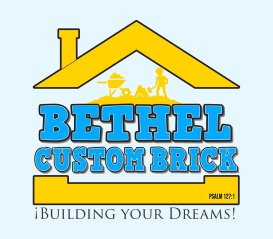A crumbling masonry chimney not only detracts from the beauty of your home but also poses serious safety and structural risks. Over time, exposure to the elements, moisture, and natural wear can cause bricks to spall, mortar joints to erode, and the chimney’s stability to weaken. Restoring a damaged chimney is a multi-step process that requires expert care and attention to detail. Here’s how you can bring a crumbling masonry chimney back to its former glory, ensuring it’s both safe and aesthetically pleasing.
Signs Your Chimney Needs Restoration
Before beginning restoration, it’s important to recognize the warning signs of a crumbling chimney:
- 1. Spalling Bricks: Bricks that are flaking, cracking, or disintegrating indicate water infiltration and freeze-thaw damage.
- 2. Eroded Mortar Joints: Missing or crumbling mortar weakens the structural integrity of the chimney.
- 3. Leaning or Tilting: A visibly leaning chimney is a serious structural hazard that requires immediate attention.
- 4. Water Damage: Damp walls near the chimney, efflorescence (white residue), or mold growth suggest water is penetrating the masonry.
- 5. Damaged Chimney Crown: Cracks or missing pieces in the chimney crown allow moisture to seep into the chimney.
If you notice these signs, it’s time to consider a professional restoration to prevent further deterioration.
Steps to Restore a Crumbling Masonry Chimney
Restoring a chimney requires a combination of structural repairs and protective measures to ensure long-term durability. Here’s what the process typically involves:
1. Inspection and Assessment
- What Happens: A thorough inspection identifies the extent of the damage, underlying issues, and required repairs. This includes checking the mortar joints, bricks, flashing, and chimney crown.
- Why It Matters: Understanding the root causes of damage ensures that the restoration addresses all contributing factors.
2. Removing Damaged Materials
- What Happens: Crumbling bricks and deteriorated mortar are carefully removed to prevent further damage to the structure.
- Why It Matters: Removing weakened materials creates a solid base for repairs and ensures the stability of the rebuilt sections.
3. Rebuilding or Replacing Bricks
- What Happens: Spalled or damaged bricks are replaced with new ones that match the original design and color as closely as possible.
- Why It Matters: This step restores the structural integrity and aesthetic appeal of the chimney.
4. Repointing Mortar Joints
- What Happens: Damaged mortar is removed, and fresh mortar is applied to reinforce the joints between bricks.
- Why It Matters: Repointing restores strength to the chimney and prevents further water infiltration.
5. Repairing or Replacing the Chimney Crown
- What Happens: Cracked or damaged crowns are either repaired with a waterproof sealant or replaced entirely with durable materials like concrete or stone.
- Why It Matters: A properly sealed crown protects the chimney from moisture and extends its lifespan.
6. Waterproofing the Chimney
- What Happens: A breathable waterproof sealant is applied to the masonry to repel water while allowing moisture trapped inside to escape.
- Why It Matters: Waterproofing prevents future damage caused by water infiltration and freeze-thaw cycles.
7. Installing or Repairing Flashing
- What Happens: Flashing at the base of the chimney is repaired or replaced to create a watertight seal between the chimney and the roof.
- Why It Matters: Proper flashing protects both the chimney and your home from water leaks.
Benefits of Chimney Restoration
Restoring a crumbling masonry chimney offers several important benefits:
- 1. Enhanced Safety: Repairing structural damage ensures that the chimney is stable and safe for use.
- 2. Improved Efficiency: A restored chimney improves ventilation and prevents heat and smoke from escaping into your home.
- 3. Increased Curb Appeal: Restoring bricks and mortar enhances the appearance of your home and preserves its architectural charm.
- 4. Extended Lifespan: Regular maintenance and restoration can add decades to the life of your chimney, saving you from costly replacements.
- 5. Preventing Further Damage: Addressing cracks, spalling, and water infiltration early prevents minor issues from escalating into major repairs.
Tips for Maintaining a Restored Chimney
After restoring your chimney, regular maintenance is key to keeping it in excellent condition:
- Schedule Annual Inspections: Regular inspections help identify and address small issues before they worsen.
- Clean the Chimney Regularly: Remove soot, creosote, and debris to maintain proper airflow and reduce fire risks.
- Apply Waterproofing Treatments: Reapply a waterproof sealant every 5–7 years to protect the masonry from moisture.
- Check the Chimney Cap: Ensure the chimney cap is in good condition to prevent debris, water, and animals from entering.
Bethel Custom Brick – Your Local Masonry Chimney Restoration Experts
At Bethel Custom Brick, we specialize in restoring crumbling masonry chimneys to their original beauty and functionality. Serving the Detroit Metro area, our skilled team provides expert services, including brick replacement, repointing, crown repair, and waterproofing. Contact us today to schedule an inspection and let us bring your chimney back to its former glory with professional craftsmanship and care.


